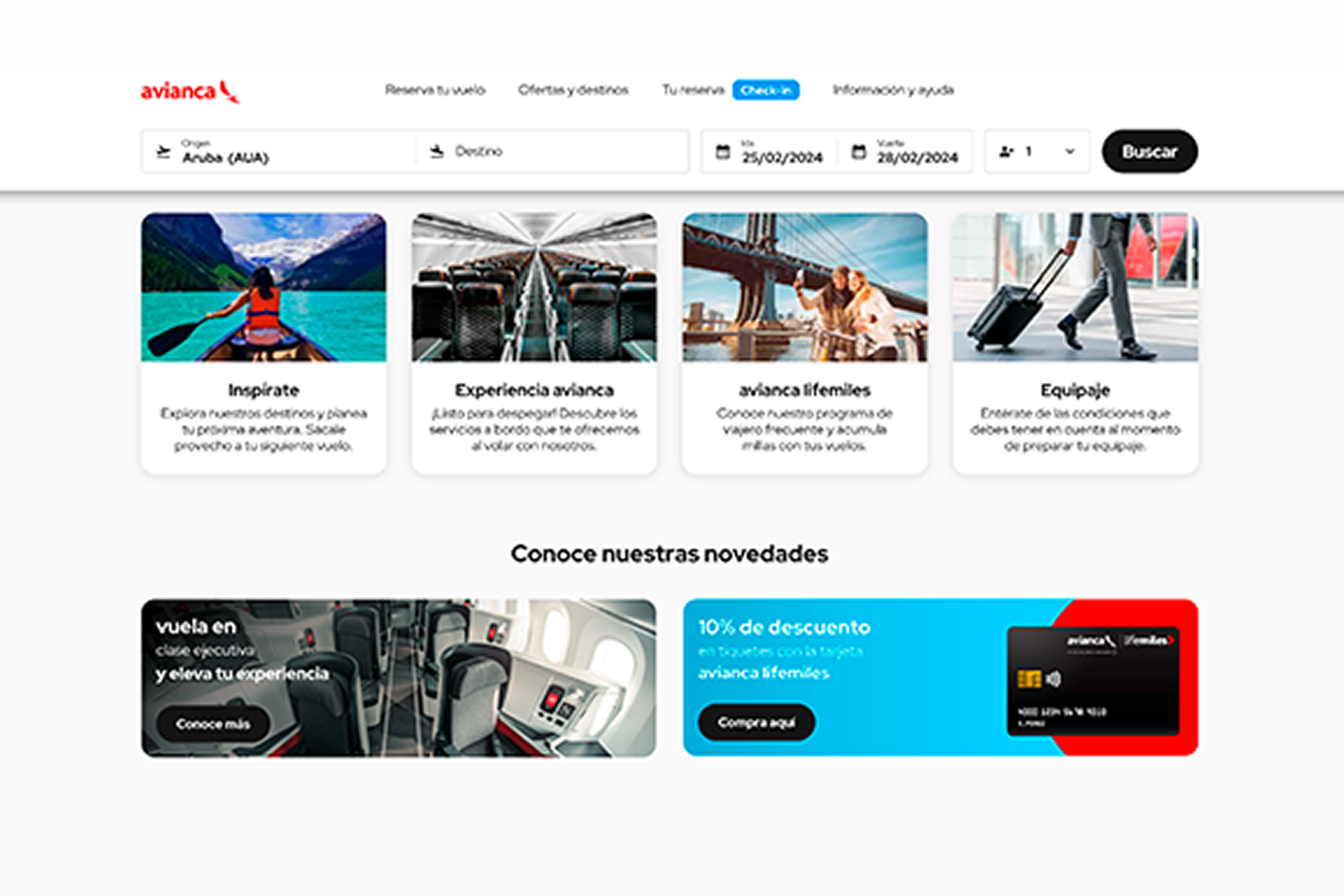
Strategy development and customer journeys through marketing automation and data activation.
User experience (UX) has become critically important in today's marketing landscape. As companies strive to captivate and retain their target audience, understanding the intricacies of user experience becomes paramount. Analyzing key metrics not only provides valuable insights into how users interact with your website or product, but also reveals opportunities for improvement. In this article, we'll explore the essential metrics that can help marketers effectively evaluate user experience. As we dive into measuring website performance, tracking user engagement and evaluating customer satisfaction, we'll discover practical, data-driven strategies to optimize your marketing efforts and achieve success. Whether you're an experienced marketer or just starting out in the field, this guide will provide you with the knowledge you need to improve your initiatives. Dive in with us and discover the key metrics that will unlock the potential of user experience!
Website performance plays a critical role in shaping the user experience. Users have increasingly high expectations for page load speed and overall website responsiveness. A slow loading website not only frustrates users, but also leads to higher abandonment rates and a negative perception of your brand. To ensure an exceptional user experience, it is essential to focus on the following key metrics:
Website loading speed is a critical factor that significantly influences user satisfaction. Research shows that users tend to abandon a website if it takes more than a few seconds to load. Slow load times can result in missed opportunities, lower engagement and ultimately lower conversion.
Page abandonment rates and bounce rates provide valuable information about how users interact with your website. A high abandonment rate indicates that users leave your website without exploring further, while a high bounce rate indicates that users arrive at a page and leave quickly without taking any further action. By monitoring and analyzing these metrics, you can identify specific pages or elements that may cause user dissatisfaction or confusion.
In today's mobile-centric world, optimizing your website for mobile devices is no longer optional, it's a necessity. Mobile adaptability refers to your website's ability to adapt and function properly on different screen sizes and mobile devices. With the majority of Internet users accessing websites through their smartphones, it is crucial to ensure a smooth and user-friendly mobile experience. Metrics such as mobile load times, mobile bounce rates and mobile conversion rates will help you evaluate the effectiveness of your mobile optimization efforts.
By focusing on these website performance metrics, you can gain valuable insight into areas of improvement for your website. Implementing strategies to improve load speed, reduce abandonment rates and prioritize mobile adaptability will result in a better user experience, which in turn will translate into higher engagement and conversion.
Understanding how users interact with your website or product is essential to optimizing the user experience. By tracking key metrics related to user engagement, you can gain insight into user behavior, preferences and pain points. This information allows you to make informed data-driven decisions to improve engagement and ultimately drive conversions. Let's look at the key metrics that can help you effectively track user engagement:
Click-through rates (CTR) measure the percentage of users who click on a specific element, such as a call-to-action button or promotional banner. High CTR rates indicate that users are actively interacting with your website and exploring content or offers. Conversion rates, on the other hand, measure the percentage of users who take a desired action, such as making a purchase or completing a form. By analyzing click-through rates and conversion rates, you can identify areas where user engagement may be insufficient and implement strategies to improve it.
The time users spend on your website or individual pages provides information about their level of engagement and interest. Longer session durations and more time spent on specific pages suggest that users find your content valuable and engaging. Conversely, short session durations may indicate that users are not finding what they need or are experiencing usability issues. By analyzing page time spent and session duration, you can identify content gaps, optimize user flow and improve engagement.
User interactions, such as clicks, scrolls and form submissions, can provide valuable information about how users interact with your website. Heat maps and behavioral flow analysis tools provide visual representations of user interactions, highlighting areas of high engagement or abandonment. By monitoring these metrics, you can identify potential trouble spots, optimize navigation and streamline the user journey to improve engagement and conversions.
Tracking user engagement metrics allows you to understand how users interact with your website or product and make informed decisions to improve their experience. By analyzing click-through rates, conversion rates, time spent on page, session duration and user interactions, you can identify areas for optimization and create a more engaging user experience.
Customer satisfaction is a vital component of a successful customer experience strategy. Happy and satisfied customers are more likely to become loyal advocates of your brand, which translates into higher retention and positive word-of-mouth. Assessing customer satisfaction involves collecting feedback and analyzing relevant metrics to understand how well your product or service meets customer expectations. Let's look at the key metrics that can help you evaluate customer satisfaction effectively:
The Net Promoter Score is a widely used metric that measures customer loyalty and satisfaction. It consists of surveying customers and asking them to rate, on a scale of 0-10, how likely they are to recommend your product or service to others. Based on their responses, customers are classified into Promoters (score of 9-10), Passives (score of 7-8) and Detractors (score of 0-6). By calculating NPS, you can assess overall customer satisfaction and identify areas for improvement.
Actively collecting customer feedback through surveys, feedback forms or social media platforms allows you to gain valuable information about their experiences. Pay attention to both positive and negative comments, as they provide opportunities to learn and improve the user experience. In addition, monitoring online reviews on platforms such as Google Reviews, Yelp or industry-specific review sites can provide valuable feedback and highlight areas that need attention.
Customer service interactions can provide valuable information about customer satisfaction. By tracking metrics such as response time, resolution time and customer satisfaction ratings for support interactions, you can evaluate the effectiveness of your support team and identify potential trouble spots. Support data analysis helps you proactively address customer concerns, improve response times and increase overall satisfaction.
Evaluating customer satisfaction metrics allows you to understand how well your product or service meets customer needs and expectations. By measuring Net Promoter Score, collecting customer feedback and analyzing support interactions, you can identify areas for improvement and take proactive steps to improve customer satisfaction.
In today's highly competitive marketing environment, prioritizing user experience is critical to the success of any strategy. Analyzing key metrics related to user experience provides invaluable insights into your website's effectiveness, user engagement and customer satisfaction. Throughout this article, we have explored the importance of measuring website performance, tracking user engagement and evaluating customer satisfaction.
By measuring website performance metrics such as load speed, abandonment rates and mobile adaptability, you can ensure a smooth user experience. By tracking user engagement metrics such as click-through rates, conversion rates, time spent on page and user interactions, you can optimize content, navigation and user flow, leading to higher engagement and conversion. By evaluating customer satisfaction through metrics such as Net Promoter Score, customer feedback and customer service interactions, you can identify areas for improvement and build a loyal customer base.
It is important to keep in mind that user experience analysis is an iterative process. The digital landscape evolves rapidly, and user preferences and expectations change over time. Therefore, it is crucial to constantly monitor and analyze these metrics, adapt and optimize your marketing efforts accordingly.
By leveraging data-driven insights from these key metrics, you can make informed decisions to improve the user experience. Remember that improving the user experience not only leads to higher engagement and conversion, but also fosters customer loyalty and positive brand advocacy.
In conclusion, by focusing on key metrics to analyze user experience, you can unlock the potential for growth and success in your marketing initiatives. By implementing data-driven improvements in website performance, user engagement and customer satisfaction, you can deliver exceptional experiences and gain a competitive advantage in the marketplace. So, embrace the power of these metrics and create a user-centric marketing strategy that delights and engages your target audience.

Strategy development and customer journeys through marketing automation and data activation.

UX data analysis focuses on understanding how users behave and interact with a product or service....

UX Strategies for Increasing Customer...
UX optimization has become a determining factor for the success of any online marketing strategy.